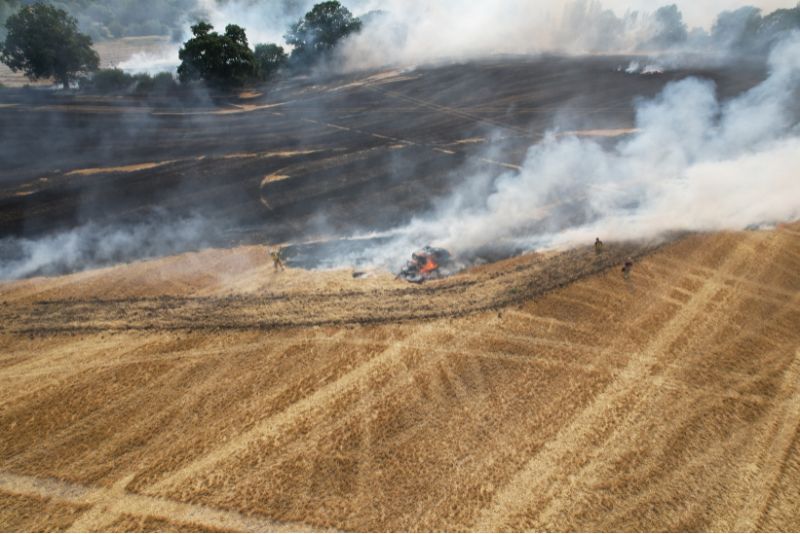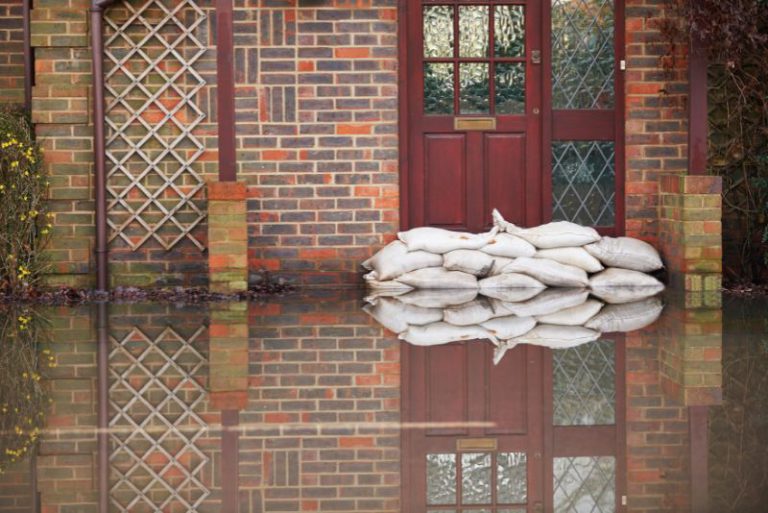Global warming isn’t all sunshine and ice lollies. In fact, the Earth’s rising temperature is likely to cause a huge increase in the amount of rainfall, which will create widescale flooding, more hurricanes, wildfires and other extreme weather phenomena. Across the world, the construction industry is facing a new reality as extreme weather events become more frequent and severe, posing both challenges and opportunities for the building trade.
The knock-on effect of increased rainfall will see a rise in demand for repair work to buildings, flood defences being required where previously it would have been unnecessary and other construction work to prepare British homes. Whilst this is certainly going to see a surge in demand for construction work, will the wet weather also have an adverse effect on the industry by preventing some work from taking place?
The future of the UK’s construction industry is chequered with highs and lows. Here’s what we will all need to learn to expect from global warming.
Weathering the storm
Increased infrastructure damage from storms, flooding, and even wildfires, caused by high temperatures, will create millions, even billions of pounds of damage that will need to be repaired. This will lead to increased demands on the construction industry, and disrupted construction timelines will impact on the completion dates and overall project management of planned construction work.
What’s more, the impact of weather damage will be significant on the communities affected. For example, the 2009 Cockermouth Floods were devastating for the for small Cumbrian market town: it was the third time in four years that unprecedented rainfall caused rivers and streams to spill into hundreds of homes and businesses. The community experienced a very turbulent few years and to protect the town from experiencing such a destructive flood again, £4.4 million was spent on flood defence work in the town, in addition to the money spent on establishing clothing banks, support clinics and actions groups to cope with the physical and emotional effects of the floods.
In light of the lessons learnt from these disastrous evens, constructing emergency shelters or planning for the multipurpose use of spaces like leisure centres and schools, to provide temporary shelter for whole communities during a natural disaster might well become commonplace in the UK’s future due to the increased likelihood of flooding.
Can we avoid major delays?
Whether due to intense heat, excessive rainfall or high winds, the turbulent weather will likely also cause delays to planned building work by making it unsafe to work outside at times. Accessing accurate and up-to-date weather data is vital now for construction planning and risk management but, in the years to come it will be hugely important for building trade professionals to use technology to gain a clear picture of what the weather has in store.
By integrating weather data into project management systems, construction professionals can be proactive in their decision-making, and hopefully minimise the impact of poor weather conditions. This could mean that builders work with climate scientists, and the need for collaboration won’t stop there.
If you’re working in construction, you may find yourself collaborating with climate scientists, engineers, and urban planners to develop innovative solutions for climate change, to help us protect our changing world by creating resilient and adaptable buildings and infrastructure.
Proper planning prevents poor performance!
You may be surprised that there are silver linings to these erratic weather conditions! But one of the takeaways from global warming is that there will be a huge demand for resilient construction to ensure that buildings can withstand the challenges posed by extreme weather.
The building trade could capitalise on that demand, by focusing on resilient and sustainable construction practices, utilising innovative materials, and implementing climate-adaptive design principles. Retrofitting and repair work will also be a boon for the construction industry as people will need to adapt their homes and businesses.
Older buildings will need to be modified to improve their resilience and if they are Listed Buildings then there will be numerous regulations in place to protect the historically significant building. Contractors and engineers with experience in weatherproofing and fortifying older buildings will likely be in great demand, so this is an area in which to invest if you are looking at how to elevate your business through extra staff training and development.
Health and safety under an even greater magnifying glass
One of the potential negatives of global warning for construction workers negatives is the impact on labour. Heat exposure, on the other hand, caused the loss of six million potential labour hours in 2021.
Heat stress can cause heat stroke, heat exhaustion, heat cramps, or heat rashes. Heat can also increase the risk of injuries in workers as it may result in sweaty palms, fogged-up safety glasses, and dizziness. Not only would the weather conditions make it difficult for construction workers to carry out work, but the greater safety concerns will increase the necessity for additional safety measures and expenses.

Will regulations and building codes keep up?
Governments worldwide will need to take direct action quickly regarding weather-proofing measures for any new buildings. Having stricter building codes and regulations to improve the resilience of structures against extreme weather is essential, however it also comes at a cost.
They can increase compliance costs and pose challenges for builders as they learn to adjust to new standards. Additionally, a variety of green-building techniques have already come into force, such as the amount of loft insulation in new builds, which was part of the 2006 Building Regulations.
Embracing green building techniques will help reduce the effects of climate change, so being at the forefront of offering energy-efficient designs, renewable energy integration, and eco-friendly materials will be very important over the next few years.
How will climate change impact your trade?
Extreme weather is undeniably reshaping the building trade as we know it. While it presents challenges in the form of increased damages, delays, and safety concerns, it also brings opportunities for adaptation, innovation, and growth.
By embracing resilient construction practices, incorporating green building techniques, and collaborating with experts, the building trade can play a significant role in addressing the challenges posed by climate change. Ultimately a forward-thinking approach that accounts for weather risks and integrates sustainable solutions will help shape a strong future for the construction industry.
As extreme weather events become more frequent, insurance companies and risk management firms play a crucial role in the construction industry. Not only will individual construction projects have to be appropriately insured, but construction companies will also need to ensure that they have all of the appropriate levels of risk covered for their headquarters, vehicles, tools and staff.
Whatever the weather, we’re here to help!
Whatever your business needs, we’ve got you covered. If you need to discuss your insurance needs, from public liability to van insurance, our friendly team of experts can help. Simply call your local business branch directly or pop into speak in-person.
Sources: Science Focus, BBC, Construction Management, Historic England, The Telegraph, CDC, LABC, Insulation Shop,

